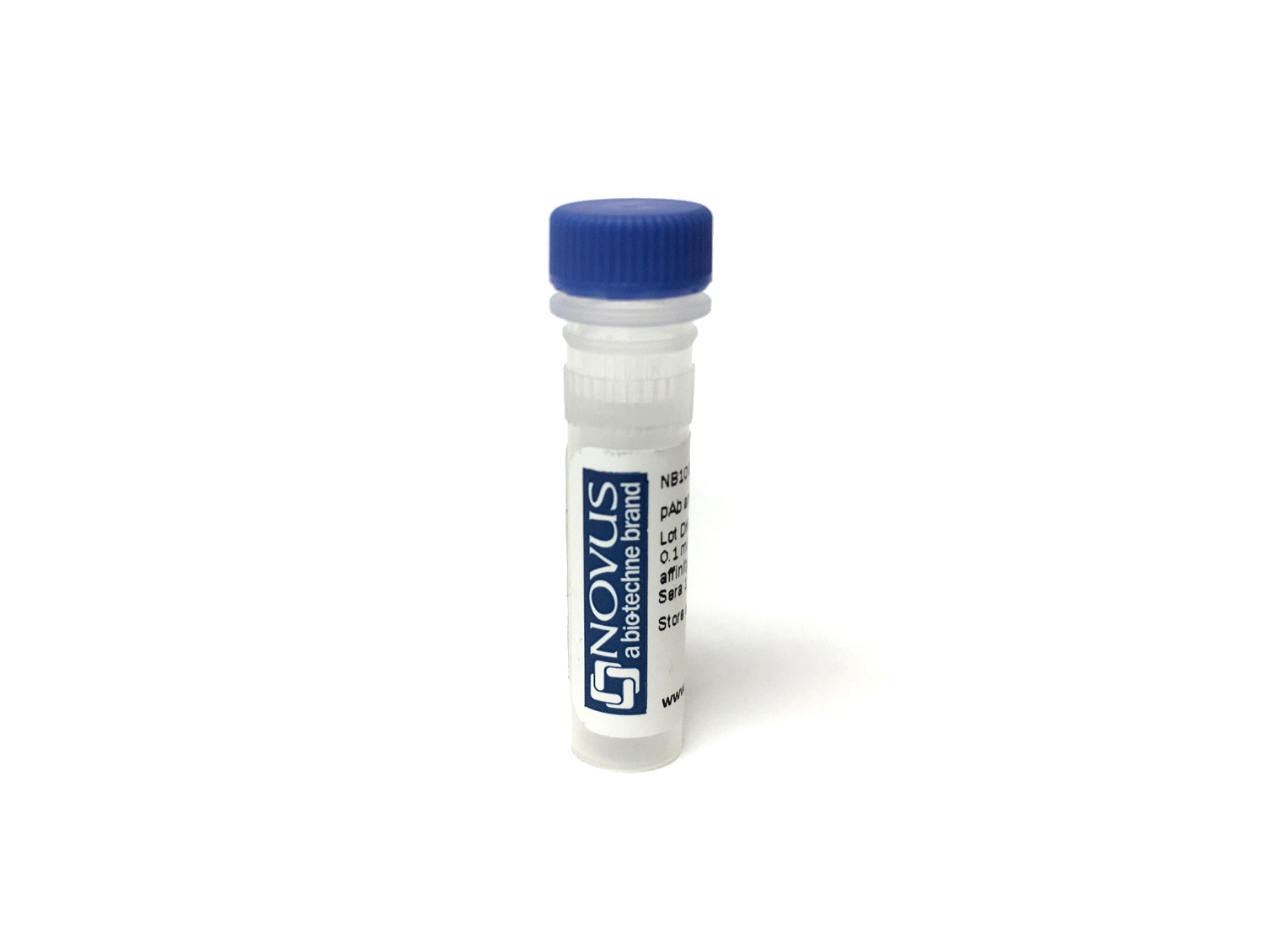S5a/Angiocidin Antibody (CPTC-PSMD4-3) [CoraFluor™ 1]
Novus Biologicals, part of Bio-Techne | Catalog # NBP3-08271CL1


Key Product Details
Species Reactivity
Applications
Label
Antibody Source
Concentration
Product Specifications
Immunogen
Localization
Clonality
Host
Isotype
Description
CoraFluor(TM) 1, amine reactive
CoraFluor(TM) 1, thiol reactive
For more information, please see our CoraFluor(TM) TR-FRET technology flyer.
Applications for S5a/Angiocidin Antibody (CPTC-PSMD4-3) [CoraFluor™ 1]
Protein Array
Western Blot
Formulation, Preparation, and Storage
Purification
Formulation
Preservative
Concentration
Shipping
Stability & Storage
Background: S5a/Angiocidin
S5a/Angiocidin, also known as Anti-secretory Factor (ASF), is classified under the gene PSMD4, but is often referred to by a different name depending on the context in which it is described. S5a and ASF have identical 377 amino acid (aa) sequences, while Angiocidin is described as having an additional Gly255Glu256Arg257 sequence in its C-Terminus. The human protein shares 96% and 99% aa sequence identity with its mouse and rat orthologs, respectively. Structurally, it contains an N-terminal von Willebrand Factor type A domain and two C-terminal Ubiquitin-interacting motifs (UIM). It acts as a Ubiquitin-binding protein where it is most commonly referred to as S5a or in yeast as Rpn10. It is part of the 19S regulatory subunit of the 26S Proteasome where its UIM recognizes poly-ubiquitinated proteins destined for degradation. As a part of the proteasome complex, it may also recognize the Ubiquitin-like modifier FAT10. Free cytoplasmic forms also exist where its ubiquitination is catalyzed by a range of Ubiquitin E3 ligases from different classes. Therefore, experimentally S5a/Angiocidin may act as a useful substrate to monitor the activity of (E3) ligases, independent of their specific mechanisms of action. In cancer biology, where it is often referred to as Angiocidin, it is shown to slow tumor progression. It is found in the extracellular matrix of certain tumor subtypes, and it may act by suppressing angiogenesis or by directly inhibiting tumor cell growth. It also is found in several biological fluids where it is known primarily as ASF. It suppresses fluid secretion in response to enterotoxin and may act as an anti-inflammatory factor.
Long Name
Alternate Names
Gene Symbol
Additional S5a/Angiocidin Products
Product Documents for S5a/Angiocidin Antibody (CPTC-PSMD4-3) [CoraFluor™ 1]
Product Specific Notices for S5a/Angiocidin Antibody (CPTC-PSMD4-3) [CoraFluor™ 1]
CoraFluor (TM) is a trademark of Bio-Techne Corp. Sold for research purposes only under agreement from Massachusetts General Hospital. US patent 2022/0025254
This product is for research use only and is not approved for use in humans or in clinical diagnosis. Primary Antibodies are guaranteed for 1 year from date of receipt.